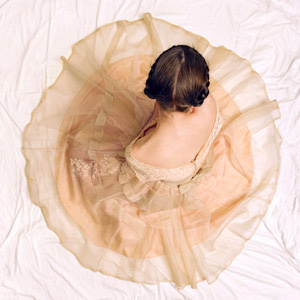
Endless Coil
Twists and Turns
Do you own a collection of love letters or cards - a surprise bundle which you unearth now and again when moving house or spring cleaning? No matter how many years or decades go by, there are certain notes which have retained their original resonance, even if tainted by subsequent events. It takes more will than we have been able to muster to completely sever these memories or bonds of personal history, imbued as they are with hopeful desires and impetuous behaviour. Such traces of love or lust are not yet ready for the recycling bin. However, with the benefit of retrospectivity we sense the ghosts of déjà vu and inevitability. No matter the freshness of the feelings once pressed into the service of a relationship, those sentiments had always been said (by others) before and would be conveyed by us again.
It may seem a leap from those communiqués of ardor to Deborah Paauwe's current body of photographs. On the other hand, her images are also suffused with symbolic power, that of photography, and the representational and associative possibilities of her medium and subject matter across time. Like a lover, Paauwe understands the pull of love and yearnings of the flesh. She explores the effectiveness of her medium as an organic substance, a surface producing images of beauty, sentiment, metaphor and other universal values. By conjuring other bodies with her photography Paauwe presses us to question our relationships with these others she controls, and to ask just what the artist is proposing here?
Across the twentieth century, photographers have tested questions of how the truth and goodness of images can be called to account. Paauwe extends this tradition of image-making. Confining her sitters to children and young adults enables a boundary to be drawn around a subject, limiting the zone in which she will tighten the screws. The strategy is then to survey and zoom in on her subjects. In the current series Carousel, Paauwe's lens has the forensic scrutiny of a diligent anthropologist or apprehensive matriarch. No detail escapes the camera's meticulous recording of hands, feet, fabrics and other physical details.
The format of these photographs of 'restless mysteries' tidies young women into something unnatural: each is almost perfectly geometric, a unitary circle within a square. Shot from above, the viewer seems to take the role of a microscope lens, pressing down on its specimen. Any personal or womanly differentiation is minimised, drained by the colouration of the light and surrounding whorls of closely toned cotton and chiffon.
These photographs clearly distinguish themselves from family or studio images, most particularly for the lack of visibility of the girls' faces. Even the freshness of youth is masked in this way, only bared necks or vulnerable female backs are exposed to view. The sense of strangeness is heightened by the dresses, which evoke another, earlier decade, appearing incongruous on the frame of a young girl whose body does not give off the excitement of dressing up and childishly play acting for the camera. Laying bare an enigma, the truth of the relations in Paauwe's images can only be accessed by the viewer's imagination.
The catatonic stillness and repeated, decisive moments of the Carousel series are clearly an artifice, but a deliberately elusive play act on the part of the artist. Are the downcast and hair-covered faces to suggest modesty, or euphoria? Is this a lover's strategy of designing similarity in order to expose difference or highlight beauty in the flawed details of bitten finger nails, ill-fitting gowns, inaccurately parted hair and stained frocks?
Coils, dots, spirals, wheels and whorls; Paauwe turns the symbolic potential of photography over and over like a lover composing an undeliverable poem. There is no relief for the desire that loops the viewer's gaze across image after image, no end is offered to the cycling of related ideas. Her romance with flesh and feelings is a fascination shared historically with artists from Inges to Matisse, and remains a compulsion with her contemporaries such as Kiki Smith.
Photographs both mark and connect points across time, memorializing others and reinvigorating feelings held in suspension, like remembering a face recalled by a long forgotten valentine. Love and mourning, life and loss: both circulate through images and texts. Such connectivity is also to be found in the myths and theories that explain humanity and provide our understanding of nature, as well as being absorbed into academic disciplines from psychoanalysis to economics when birth is described as part of death, beauty found in ugliness, consistency reliant on instability, the void part of wholeness… Similarly we find contemporary and intertwined sensations, such as that of the unspoilt and the violated, the demur and despoiled, responses that circulate in our viewing of the Carousel images.
With compositions reminiscent of the centralised orb of an eye, the images of Carousel uncannily look back at us. Their permanent stare is a reminder not only of the endurance of the print but also the archiving power of the mind, with its often capricious recall of past infatuations and adored ones. Paauwe pours over the interlinked topology of reality, image and memory, and invites the magic of transubstantiation from material facts to unconscious emotions. She helps us see that the camera cannot compare to the godlike eye, even though photography is less and less forgiving of human imperfections. Aware of photography's inevitable fickleness and infidelities, will we ever love her exquisite wheel again?
© Zara Stanhope, 2008